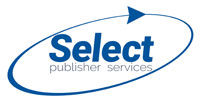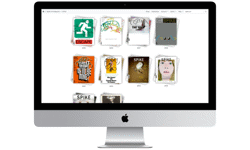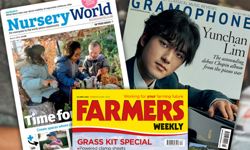Imagine me as Baron Frankenstein, shrieking for “More power, Igor! More power!”. I am reanimating the great direct marketing copywriters of the last 100 years. If we plonked them down in the middle of a seminar on 21st Century direct marketing (DM), would they feel like Rip Van Winkle, baffled by this new world into which they had awoken? Or would they just shrug their shoulders and bang out some control-beating copy like they used to? I suspect the latter. Because surprisingly little has changed in the world of direct marketing copywriting.
Here then are 21 of my favourite DM tricks – you can decide for yourself which ones will suit your next campaign.
1. PS
Even before the advent of digital media, people (who should have known better) were questioning the relevance of the PS. “Surely,” they asked, “people know this is produced on a word processor, so anything the writer needed to add could be pasted in above the signature?” Well, yes. But that’s to miss an important point. Its position under the signature, which people always look at, makes it very likely to be read, so it’s an ideal place for some stealth selling.
2. Ultra-short paragraphs
If you’re writing for the web or email, you need to keep your paragraphs to a maximum of five lines. But shorter is better. For a really powerful opening to a letter, ad, landing page or email, try using a single word for your opening paragraph. Love, sex, money, power, death, taxes, pain or kids would all work well.
3. Irrational paragraph breaks
If you break paragraphs in the “wrong” place, you monkey around with the reader’s expectations. Instead of being able to finish a paragraph and take away a complete thought, they must read on to finish it. But reading on through DM copy is precisely what they don’t want to do. So we are training them to read our DM copy. But that’s not all.
4. Cracking headlines
Headlines are not there to make jokes, educate or show off the copywriter’s learning: just to make the reader read the body copy. Appealing to the prospect’s self-interest has been tested and proved to be the most effective strategy. There’s no hard and fast rule about length, but we certainly don’t want to waste words. Starting with “How”, “Why”, “Where” or “Now” is a quick fix. Subject lines are headlines, as are <h1>s, and the same rules apply online as off – benefits are best of all, a sense of urgency helps and emotional appeal is the killer punch. SEO means including keywords in your online headlines is a good idea, but you were going to do that anyway.
5. Cross-heads
You can use cross-heads to tell the story in outline. If they’re all your reader reads, they still get the sales pitch. (Joe Sugarman, the US DM expert, tested nonsense cross-heads and found they improved response almost as much as sensible ones.) For long-form copy – sales letters and landing pages – they’re essential. Make sure your designer styles them <h2> for the web.
6. Teasers for outers and subject lines
Teasers have one purpose: to get the reader inside an envelope or to open an email. That’s it. Without damaging your brand by promising nude photos of the Hollywood star/let du jour, pretty well anything you can dream up goes. When it comes to subject lines, keep your keywords at the beginning of your subject line to ensure they don’t get truncated into obliv…
7. Order forms
On an order form, why refer to the process? In other words, why head it “Order form”? And why write the copy line as “YES! I want to subscribe to Practical Ant Farming”? That’s what you want, not what the reader wants. Instead, treat the order form as a promotion in its own right. Write a headline. “Order now” is a headline, whereas “Order form” is a label. And reassure your prospect at the point of sale, with a guarantee for example, or a testimonial.
8. Conversational tone
When you’re writing to an individual, who’ll be reading your missive at home or in their office, it’s essential that you use a conversational tone of voice. It doesn’t matter if your title is called Don: the Magazine for Oxford Intelligentsia or Bert: The Builder’s Fireside Companion, you need to speak to people as if you were there with them in the Senior Common Room or down the Dog and Duck. Try using “you” and “your”, contractions (it isn’t hard) and everyday words, rather than deracinated locutions.
9. Testimonials
One of the best things about the internet is multimedia. So the humble testimonial now has a makeover on video. Now your prospect can see and hear Mrs C Johnson of Railway Cuttings extolling the virtues of a subscription to Crochet World incorporating Paintball Gunner. Make sure the testimonials bolster your pitch – you can write the interview guide to do this, but resist the temptation to edit the final encomium for style.
10. Psychology of influence
If you want to sell, you need to understand a little about human nature. If you want to sell a lot, you need to understand a lot about human nature. Two of the best sources of ideas are Abraham Maslow, whose Hierarchy of Needs is still the default for anyone seeking enlightenment about human needs and motivations, and Robert Cialdini, whose book, Influence, lists six weapons of influence you can use to encourage your prospect to comply with your suggestion.
11. How to ask for the order
Here’s how not to do it. “If you would like to subscribe to Extreme Ironing…”. What do you mean, “If”? You mean YOU’RE not sure it’s a good idea? But you wrote it! Instead, use the imperative mood in your call to action: “Join our happy crew of extreme ironing fanatics today and we will rush you your guide to ironing above 30,000 feet by return.”
12. Stealth selling
I mentioned stealth selling in trick 1. Any time your reader’s defences are down and their bullshit detector is deactivated is a great time to sell without appearing to. So the PS works, so, too, do picture captions, testimonials, most copy on order forms, Q&A box-outs, FAQ pages (does anyone even have those anymore?) and case studies.
13. The rule of three
Let’s jump into my time machine – the WORDIS – and whizz back to the marketplace in classical Athens. There we can listen to an orator expounding his theory of magazine subscription marketing. He keeps grouping words and phrases into threes. These triads seem to deliver more power, more impact and more pizazz than one, two or four similarly linked ideas.
14. Using data intelligently
Having done our research, we know everything there is to know about the world of guinea pigs. But that’s no excuse to splatter our sales copy with facts. Emotions make the sale, facts reinforce it. Perhaps the fact that of the 15 most recent winners at Pufts, the annual Cavy Breeders’ Convention, 14 were Cavy World subscribers is enough.
15. Offers and how to express them
Most people find it easier to think in fractions than decimals. “Two thirds of trainee teachers read Playground Warrior every month” is a more immediate phrase than “67% of…”. Remember, also, that most people find it easier to digest the idea of a half-price offer, than a 50% discount. But be creative. You can express “half-price” as “you pay for the first six issues, we’ll pay for the next six”.
16. Emotional copy
If you want to sell, you need to engage your prospect’s emotions in your proposition. But calling a new magazine “fantastic” or a subscriptions offer “exciting” is not good enough. You’re emoting, not evoking. Pouring your own feelings out onto the page instead of arousing the same feelings in your prospect. Use detail, storytelling and rich, sensory language instead.
17. Layout tricks
When it comes to DM copy, all the old-school direct mail tricks are alive and kicking butt on the web. Fake highlighter? Check. Fake handwritten marginal notes? Check. Bold, italic and underlining? Check, check and check. Despite the creative potential of HTML, Flash and the rest, what works now looks suspiciously like what worked then.
18. Typefaces
I love this bit. Ready? If you want to make the most profits on your direct marketing. Test Courier. Far more experienced marketers than I (step forward D. Bird Esq.) have tested Courier and found it to be up to 20% more profitable then more aesthetically pleasing faces. Personally I find the sight of money extremely aesthetically pleasing.
19. Illustrations
The rule when using illustrations in your promotions is very simple: they should communicate not decorate. I worked with a travel information publisher who had been sending out emails with pictures of global tourist destinations at the top. A customer emailed them and said, “Why are you doing this? I know what the Taj Mahal looks like.”
20. Structure
There are different ways to structure DM copy. But the simplest and best way I have found is our old friend AIDCA: Attention, Interest, Desire, Conviction, Action. I learned it when I was knee-high to a yearling buck slip and still use it.
21. Storytelling
Stuck for an opening? Tell a story. Probably the best-performing DM letter ever, for the Wall Street Journal, opens like this: “On a beautiful late spring afternoon, twenty-five years ago…” Current revenues, $2bn and counting. That’s right: billion.
So there you have it, 21 random tricks from my DM grab-bag. All have worked for our clients, and our own promotions. All perform well in tests. All work online. Over to you.












